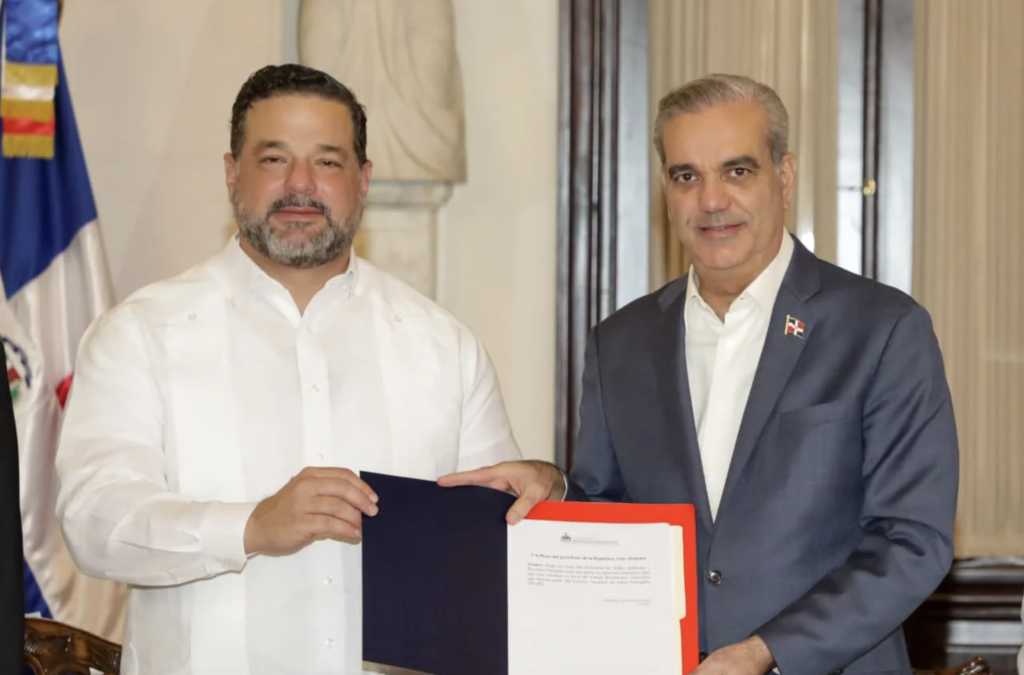
President Luis Abinader and Environment Minister Paíno Henríquez hailed the advances in titling of protected areas as a “historic milestone” that has cemented the creation and strengthening of the National System of Protected Areas (SINAP).
Minister of Environment Paino Henriquez announced the Dominican Republic has become the first country in the Caribbean to reach the global objective of protecting 30% of its coasts. Henriquez also spoke of the important advances in land titling of the protected areas, backed by Protected Areas Sectorial Law 202-04. He said forest areas are now 44%, up from 10% in 1970. 25.5% of Dominican territory is now under different protected area categories.
Henríquez highlighted that the National System of Protected areas ensures that 85% of the mountain water basins and birthing areas of rivers are under protection, ensuring the source of water for the population and productive sectors.
The Dominican government has announced a landmark achievement in environmental protection, titling 757.6 million square meters in protected areas, an amount that represents 80% of all such land titling in the country’s history.
Minister Henríquez highlighted that the current administration has far surpassed all previous efforts combined, which accounted for only 20% of the land titled in protected areas.
The titling has focused on key ecological sites, including Jaragua National Park, the Bahía de las Águilas Recreational Zone in southwestern Pedernales province, and José del Carmen Ramírez National Park in San Juan de la Maguana province
Henríquez credited the success to the 2004 Sectoral Law of Protected Areas (202-04), which paved the way for robust conservation measures, reforestation programs, and legal safeguards for natural resources.
Major advances include:
• Forest coverage has now increased from 10% in the 1970s to over 44% today.
• Territorial Protection: The country has legally protected 25.5% of its national territory and 30.1% of its coastal and marine zones. This makes it the first country in the Caribbean to meet the global 30×30 target, an international commitment to safeguard 30% of marine and coastal areas by 2030.
• Water Security: The SINAP is deemed critical for national sustainability as it ensures the protection of 85% of all water sources and high basins, supplying water for the population, agriculture, industry, and tourism. “Without the SINAP, there is no possibility of a sustainable and viable future for the Dominican Republic,” Henríquez stated.
In a move to continue the titling initiative, President Abinader signed an authorization for the Ministry of Environment and the Dominican Agrarian Institute (IAD) to begin titling in two more vital areas: Los Haitises National Park (Monte Plata, Hato Mayor and Samana provinces) and the Loma Novillero Forest Reserve (San Cristobal province). Over 43.2 million square meters have been identified for certification in these locations.
The President explained that much of the country’s protected land remains formally registered under other public entities—such as the IAD, the National Assets Agency, or the State Sugar Council (CEA), complicating their full protection. “We want to organize, document, and defend our green heritage, which is the same as defending the very existence of the space we occupy,” Abinader emphasized.
Both the President and the Minister of Environment concurred that this process is a decisive measure in defending the Dominican natural patrimony against threats like agricultural expansion, logging, high-altitude ranching, unchecked urban growth, and the ongoing climate crisis.
“It is a source of personal satisfaction to grant the authority to begin this process,” Abinader remarked. “What belongs to all of us also belongs to each one of us, and its protection is a sacred duty.”
The government’s goal is to provide legal certainty to the entire National System of Protected Areas, blocking attempts at illegal appropriation and safeguarding the nation’s natural inheritance as a guarantee of sustainability for future generations.
Read more in Spanish:
Hoy
Listin Diario
El Dia
El Caribe
2 October 2025

